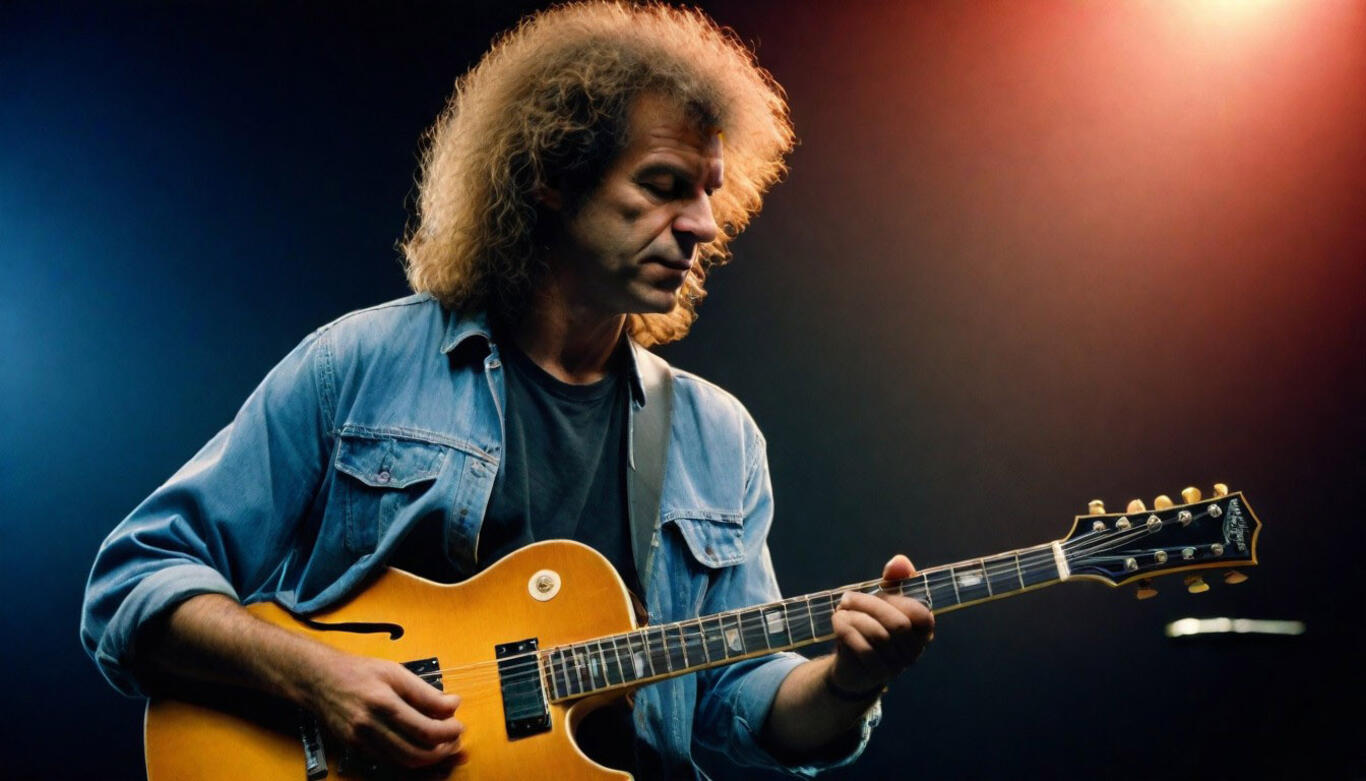How To Get Realistic Sounding Virtual Horn Sections
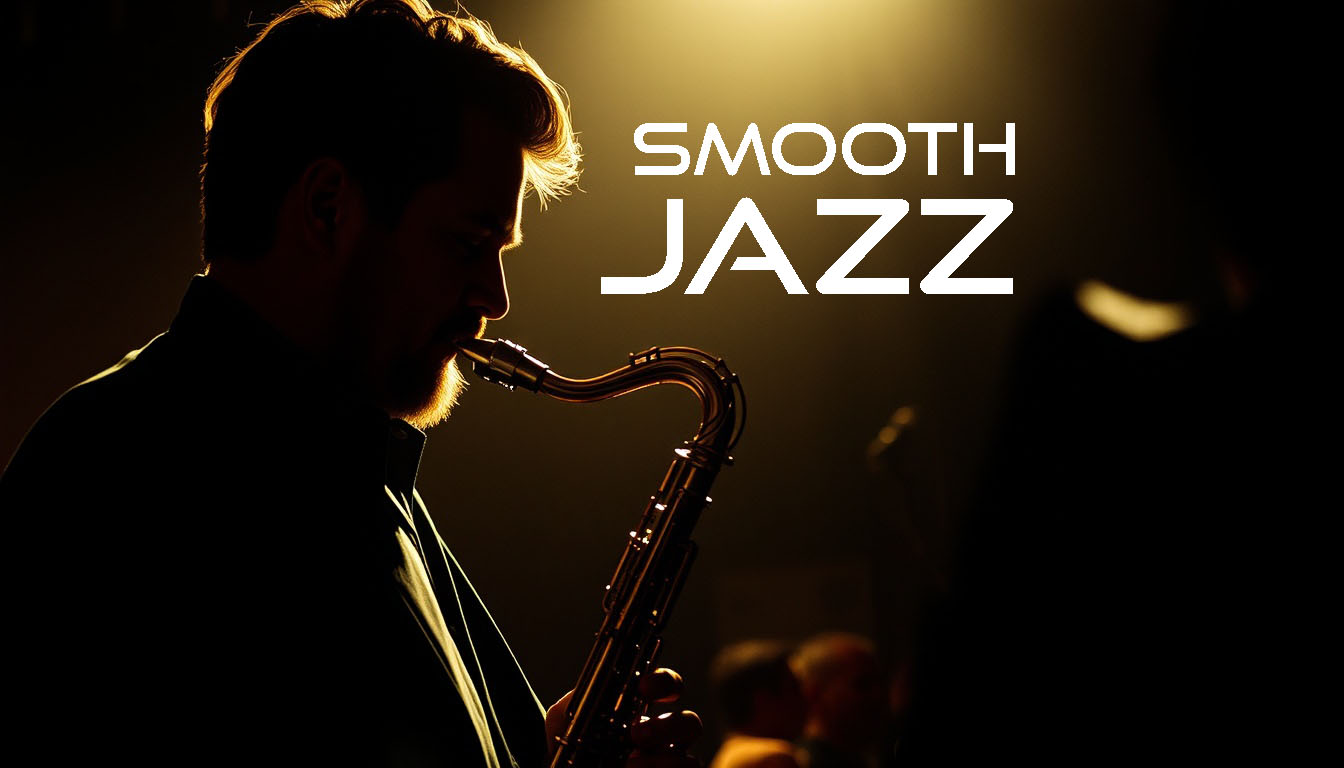
Who should read this?
Whatever your DAW is, be it Cubase, Pro Tools, Ableton, etc. the techniques I talk about will work in any of them - but you do need a basic level of competence. For instance, if you don't know what MIDI is then you really should learn about that first.
Virtual Horns
You don't need to be a horn player to add a horn section to your tracks. You can 'play' virtual instruments by writing MIDI notes inside your DAW, or by playing and recording the notes from a MIDI keyboard in real time. I favour a combination of both
Take a listen to 'song for Bilbao' on the right.
These virtual instruments are real horns, notes and articulations sampled throughout their range so they can be triggered by MIDI notes, quite expressively by playing at different velocities.
Session Horns�
You will have some virtual instruments supplied with your DAW. Some of them may be quite effective for solos but, by and large, those freebies are rubbish. You need to invest in a dedicated product. Native Instruments Session Horns is the go-to digital horn section. I am independent of them but my advice below mostly only applies to that product. If you haven't got it already, go buy it. I don't have a discount code for you but it's usually half price in cyber season (Black Friday) but won't break the bank anyway. If you have Komplete you may have it already as it comes in that package.
Don't have or don't want to buy Session Horns? OK, you can get some decent results using built-in brass instruments providing you follow this next advice.
Writing Horn Parts
First, a bit of theory, not too taxing.
Understand the individual ranges of your instruments...
- The trumpet is written in the key of Bb and only sounds good above middle C.
- The trombone is written in C and a whole octave lower than the trumpet.
- The alto saxophone is in the key of Eb, sounding a major 6th lower than written. The basic written range begins at the Bb below middle C and extends to three Fs above middle C.
Each instrument has its own playing techniques. For example, a sax is incredibly agile at playing runs, they can jump octaves easily, and are great at crescendos.
If you are writing for real horns and want more advice visit Mike Ossmann's page... .
Mike gives loads of detailed advice on the physical limitations of each horn type. For example, double and triple tonguing are pretty easy on the trumpet whereas, on the sax, you just can't play repeated notes fast.
Writing for virtual horns does not have the same physical limitations of course, you can do crazy things, but the limitations of the instrument you are emulating should still be respected to keep things realistic.
Digital Horn parts
You can write individual parts on separate tracks but the easy, crude and effective way is to use a single MIDI track. Session Horns� will sort out which instrument plays each line.
As a general rule don't use parallel fourths or fifths Try to keep most of the intervals small.
The topic of style and interpretation is far beyond the scope of this article so I don't cover it. A funk player will interpret a score very differently to a Ska band. I assume you already have a feel for your type of music.
Doits
Until I started producing my own horn parts I didn't know what the heck Doits were. They are those dramatic swells and falls that top horn sections use to give extra punch. All you need to know, with reference to creating really dynamic horns, is the section on the Session Horns™ control panel. It's ticked by default.
You can replicate doits using velocity automation but it is in this area that Session Horns excels.
What's the trick for Doits in Session Horns�
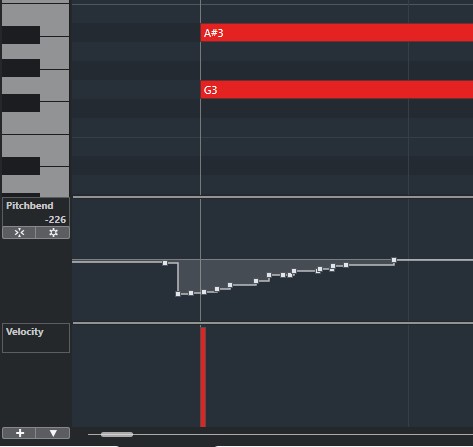
Above you see a screenshot from Cubase MIDI editor showing two midi notes, the pitchbend lane, and the velocity lane. Note the shape of the pitchbend and that it starts ahead of the notes. This will create a 'stab' like a 'pow' - an articulation with attack and quick decay. Very cool!
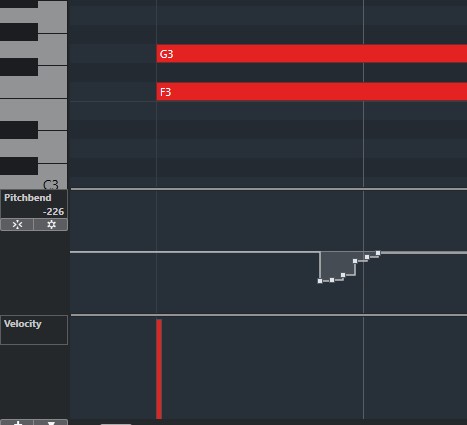
Above you see another screenshot from Cubase MIDI editor again showing two midi notes, the pitchbend lane, and the velocity lane. Note the shape of the pitchbend and that it starts ahead of the notes. It is similar to the first example but it is inside the midi note. This will create a slow crescendo, a swell if you like, with slow attack the length of the note and no decay.
These configurations are Session Horns� shorthand to trigger the doits in a particular way. The shape of the pitchbend is not critical but its position is.
Note it is totally important that the velocity of the note is at the maximum. If it is not it simply will not trigger!
Tracking more instruments is better?
I recently tackled the funk brass classic 'Pick up the Pieces' by AWB. Here I mix Session Horns trumpets with single VST horns; Trombone, Tenor Sax. I'm sure you'll agree that it is a thicker sound. At the top end the SH trumpets have doits added which gives the overall expression. Adding single instruments thickens the sound and, especially with a few tweaks, humanizes the performance - the ear believes multiple musicians are playing and that nails it!
Conclusion
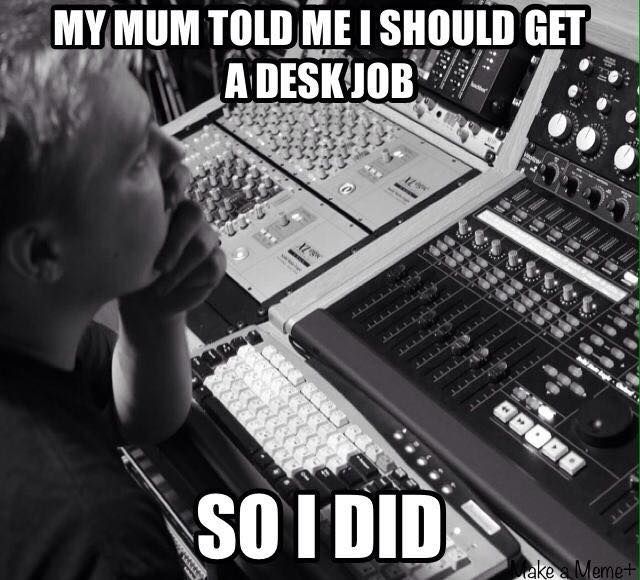
Native Instruments, who make Session Horns� have not paid me for this article so I am unbiased about the brand. I simply find this VST convenient. I do like the way it matches the pitch of notes to the various horn instruments automatically, keeping them within their pitch range. However I should mention there are alternatives.
A quick Google search on best VST horn section will bring up a few. Some are paid, some are free. I think Spitfire do an free alternative, and there are others.
One feature that give you a quick start in Session Horns� is the animator which, when enabled, allows you to select and loop built-in, pre-recorded phrases, triggered by one key. I don't really use this but note that other VST's are much heavier on this feature and have many more loops. Just sayin'
The other no-cost alternative is to create separate tracks using the VST instruments that come with your DAW. Hey, a slower workflow but equally valid.
Or, as with my Pick up the Pieces cover, a hybrid approach gives almost realistic results!
NEXT >> how to pick a music manager
